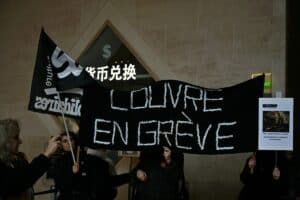Mzansi's finest are increasingly sought after in the global contemporary art scene.

When buying investment art, the best strategy is to buy ‘blue chip’ art – art that has a history of successful sales at reputable auction houses. The other strategy – shopping around to find the next big thing on the global art scene is akin to looking for a needle in a haystack.
This is according to Howard Bilton, chairman of the Sovereign Art Foundation and an art investor over the last 30 years. Bilton was in South Africa to take forward his plan to establish an African contemporary art prize, similar to the UK’s Turner Prize. His visit just happened to coincide with the 7th annual Investec Art Fair where he had his eye on acquiring a piece of ‘blue chip’ South African art.
Specifically, he was eyeing a piece of work by global Ndebele cultural icon and one of SA’s iconic contemporary artists, Dr Esther Mahlangu, whose work was on show at the fair.
“Everyone is looking for that undiscovered artist, but it’s incredibly difficult to get right. I’d estimate that 90% of art has no resale value. The safest bet is to go blue chip,” he advises.
Even then, blue chip can be risky because the art world is notoriously fluid. Investors in Turner Prize winner and celebrated contemporary artist Damien Hirst have watched as works he produced between 2005 and 2008 have resold for nearly 30% less than their original purchase price.
“Don’t start a collection if you are looking for a short-term profit. I only ever buy work that I love. Usually, it increases in value, but sometimes it doesn’t. That’s art,” Bilton says.
Alternative asset class
However, art is increasingly recognised as an alternative asset class and UBS, in conjunction with art fair organiser Art Basel, publishes an annual analysis of the art market. The most recent report, published in March 2018, noted that the global art market had seen a return to growth in 2017, with average returns of 12%.
While auctions attract a lot of publicity, art fairs are the central bastion of the international art trade. According to UBS auction sales reached an estimated $5.4 billion in 2017, while art fairs earned aggregate sales in the region of $15.5 billion – an estimated 46% of all dealers. Bilton notes that this year’s Investec Art Fair managed to attract a number of African art galleries as well as globally respected galleries such as Perrotin (founded in Paris, with posts in Europe, North America and Asia) and conceptual heavyweight Galerija Gregor Podnar, based in Berlin. “There was a great diversity of work displayed which serious collectors will love, and novice collectors will appreciate.”
The art on display was work that is not commonly seen in one place and will thus attract the big international buyers, he says. “The thing with many of the big art fairs is that the same galleries attend all the fairs, which means that if you have seen one, you have seen them all.”
Bilton also met with Azu Nwagbogu, chief curator at the Zeitz Museum of Contemporary Art Africa (MOCAA) in Cape Town, to revive enthusiasm for the idea of a pan-African art prize that will celebrate and showcase mid-career contemporary artists. “There are art prizes in South Africa, but nothing on the scale of a pan-African prize,” he says. The concept is the same as that of The Sovereign Asian Art Prize, which Bilton kickstarted 15 years ago and which funnels the proceeds into charity.
In this prize, nominated artists are invited to submit work to a judging panel made up of art specialists. A shortlist of 30 works is drawn up, from which one winning artwork is selected.
Winning works
The winner is revealed at a gala dinner during which the winning work is auctioned, with the proceeds split between the artists and the Foundation. In the Asian art prize, the Foundation supports vulnerable children across the region. The winning artists, he says, often go on to become the ‘blue-chip’ artists that investors love.
For investors he suggests that $20 000 is a good starting price for an artwork, assuming it is for resale and investment purposes. However not everyone would agree with this – a fact he freely acknowledges.
While Bilton has 30 years of experience to guide his intuition, novice buyers will be relieved to know that finding and buying art is no longer as tricky or as intimidating as it used to be, and thanks to a proliferation of galleries, museums and art fairs, African contemporary art is increasingly accessible.
Explore art fairs like the Investec Cape Town Art Fair and the Turbine Art Fair in Johannesburg. The Zeitz MOCAA in Cape Town is not to be missed, and Johannesburg is bursting with galleries.
The internet is another space to learn, source and buy art – some of it for far less than the $20,000 Bilton recommends.
Brought to you by Moneyweb






